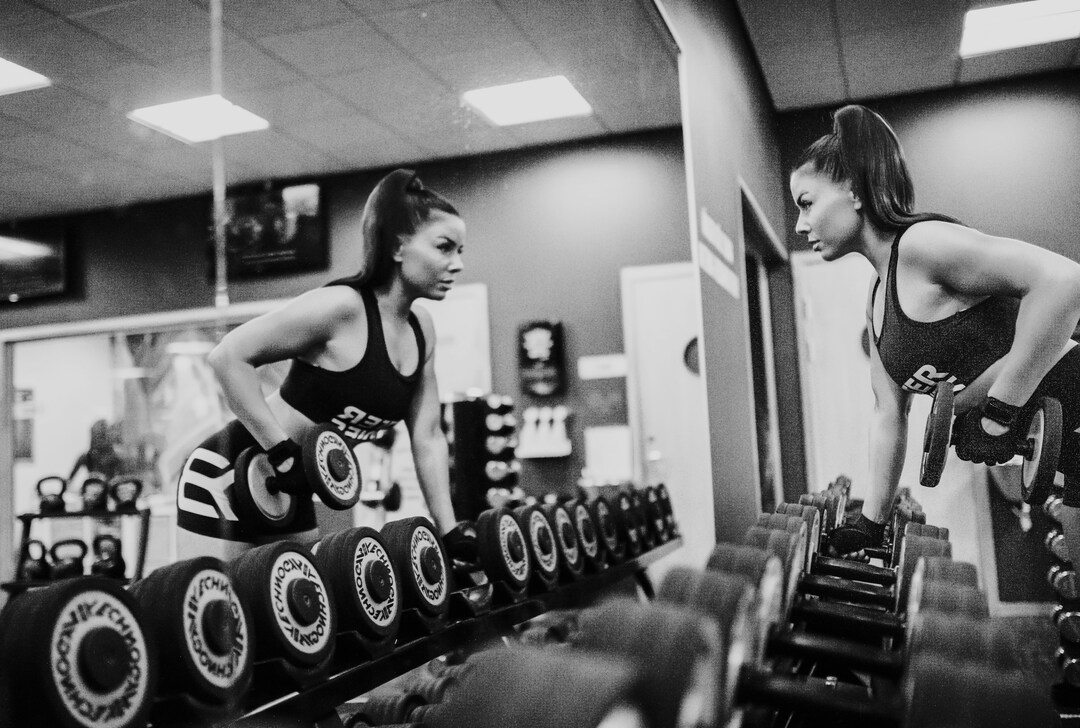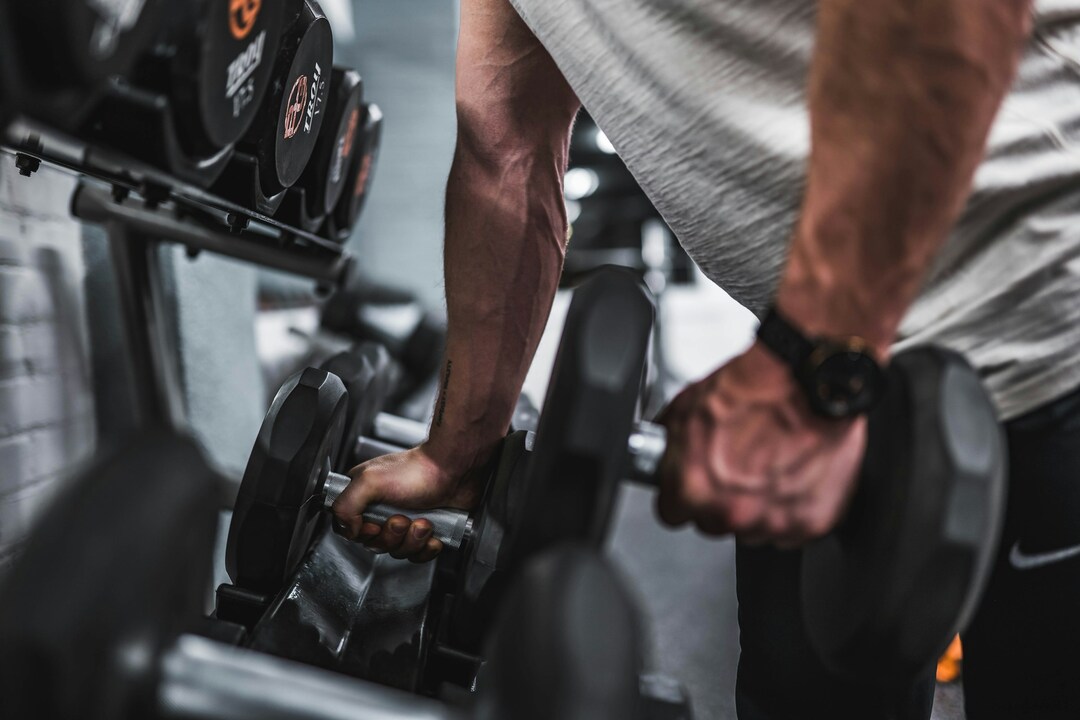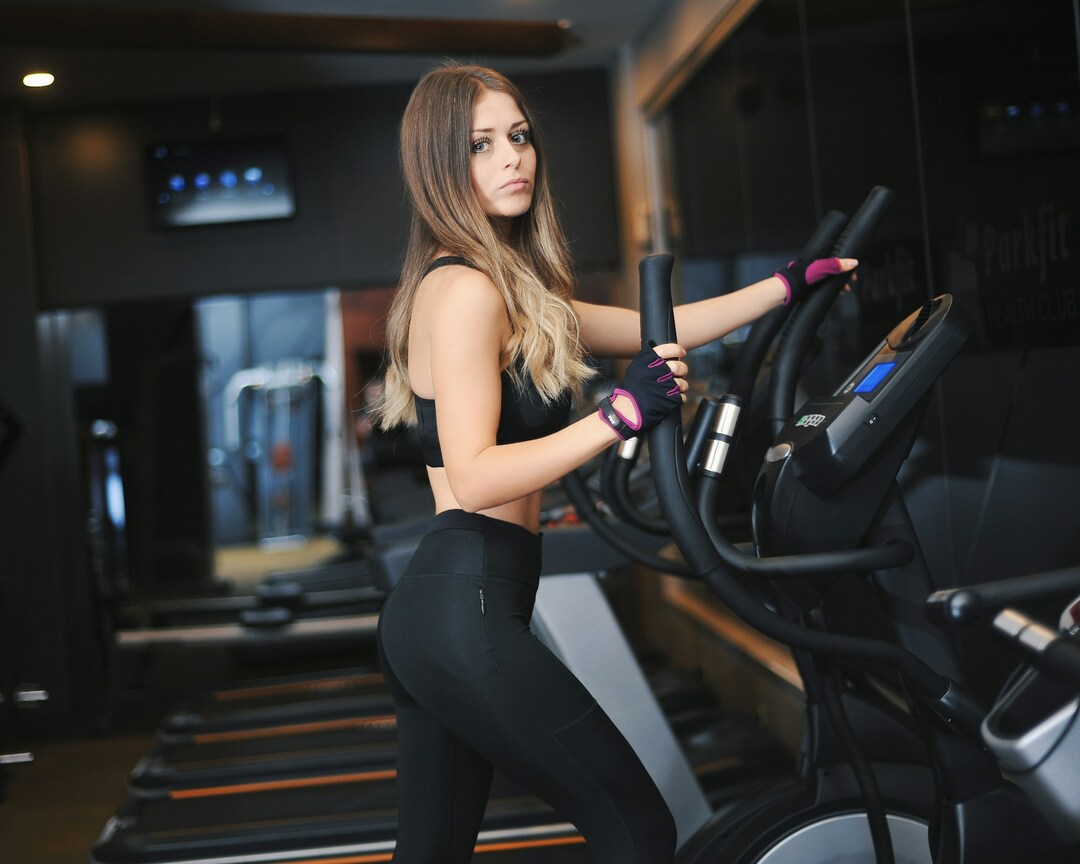100+ Motivational Workout Quotes

Motivational Workout Quotes offer practical workout plans. Discover 100+ quotes made actionable through measurable tips by GetFit AI.
Focusing on the mind is as crucial as training the body. A well-timed workout quotes can revive determination and reframe a distracted mindset. Inspirational phrases offer subtle reinforcement that builds discipline and inspires progress.
Carefully chosen motivational sayings help individuals overcome plateaus and sustain their efforts. When paired with practical goal prompts, these insights transform fleeting inspiration into continuous momentum. GetFit AI fitness app provides tools to turn that spark into a steady workout routine.
Summary
- Short, punchy workout lines reduce decision friction and act as immediate cues that prime behavior, with field observations showing a 50% increase in gym attendance when motivational quotes are displayed.
- Turning a quote into a micro-rule makes it actionable, and habit research shows forming a routine averages 66 days, so start with small, repeatable actions like a 15-minute session rule.
- Social accountability materially boosts consistency, with 70% of people reporting higher motivation when they have a workout partner and an eight-week paired trial showing partners maintained attendance through weeks three to eight.
- Timing and modality change effectiveness, since reading a short line 5 to 10 minutes before training primes action, and one study found people who read quotes before exercising were 20% more likely to stick to their routine.
- Specific, measurable goals make quotes steer behavior, because 75% of people who set specific fitness goals are more likely to achieve them, so attach a single observable metric to each cue and run a two-week micro-experiment to test impact.
- Interactive, guided practice and tiny rules protect momentum, with 50% of learners preferring interactive formats and 90% of consistent practice participants improving significantly, so use short technical drills, a 10-minute minimum rule, and an easy week every fourth week to sustain progress.
- This is where GetFit AI's AI fitness app fits in, mapping chosen motivational lines to concrete sets, reps, and progression rules while personalizing load and recovery based on your training history.
100+ Motivational Workout Quotes

These 100-plus quotes act like detailed guides instead of just vague encouragement. Each one captures a training idea, giving hints that can turn into real habits, single workouts, or tangible goals that help you improve.
With an app like GetFit AI, you can use these motivational quotes to stay focused and enhance your fitness journey.
- "Every grueling moment in training is worth enduring when you promise yourself a champion’s life ahead." — Inspired by Muhammad Ali
- "Excellence emerges not from occasional acts, but from what you habitually practice." — Inspired by Aristotle
- "Your body accomplishes what your mind is convinced it can." — Inspired by Napoleon Hill
- "Tough days forge champions; push through them and nothing will stop you." — Inspired by Dana Vollmer
- "If you don't carve out the time and effort to train, you cannot expect results." — Inspired by Arnold Schwarzenegger
- "Finishing last is better than not finishing at all, and not starting is the worst fate." — Unknown
- "Push beyond your performance yesterday to shape the success of tomorrow." — Inspired by Vincent Williams Sr.
- "The workout truly begins the moment your desire to quit takes hold." — Inspired by Ronnie Coleman
- "Care for your body diligently; it’s the sole home you get in life." — Inspired by Jim Rohn
- "Repeated failures are simply the stepping stones paving the path to success." — Inspired by Michael Jordan
- "Once fitness becomes a routine, stopping is the hardest part." — Inspired by Erin Gray
- "The secret to advancement lies in taking that very first step." — Inspired by Mark Twain
- "Exercise is the highest form of tribute you can pay to your heart's health." — Inspired by Gene Tunney
- "Persist through pain; the harder you work, the better your reflection will be." — Inspired by Joe Manganiello
- "Desire alone is not enough—unwavering commitment is the true key to success." — Inspired by Vince Lombardi
- "You miss every opportunity you don't take a shot at." — Inspired by Wayne Gretzky
- "Obstacles between you and success must be forcefully pushed aside; never accept denial." — Inspired by Dwayne “The Rock” Johnson
- "True progress happens only outside the confines of comfort." — Inspired by Michael John Bobak
- "Believe in yourself so firmly that even pretending takes you there eventually." — Inspired by Venus Williams
- "The tougher you prepare and the harder you push, the more unstoppable you become in overcoming challenges." — Inspired by Carli Lloyd
- "Endurance means embracing reality as it is and focusing forward, not dwelling on what cannot be changed." — Inspired by Rafael Nadal
- "To achieve what you’ve never had, you must be willing to do things you’ve never tried before." — Inspired by Thomas Jefferson
- "The struggle against resistance in the gym mirrors the challenges in life, forging a resilient spirit." — Inspired by Arnold Schwarzenegger
- "Steady progress today beats waiting for perfect conditions tomorrow." — Inspired by Mark Twain
- "Learning to quit turns effort into a habit, so perseverance is essential." — Inspired by Vince Lombardi
- "Unyielding determination makes you unbeatable in any competition." — Inspired by Babe Ruth
- "Do something now your future self will thank you deeply for." — Inspired by Sean Patrick Flanery
- "Success often comes from mastering how to control and learn from failure." — Inspired by Sylvester Stallone
- "Treat workouts as serious appointments with yourself that cannot be skipped." — Unknown
- "Push yourself until your muscles scream—the ‘good pain’ of real growth." — Inspired by Invajy
- "True confidence is built on the foundation of discipline and consistent training." — Inspired by Robert Kiyosaki
- "Count only the reps that challenge and hurt; those are the ones that truly matter." — Inspired by Muhammad Ali
- "Pain experienced today is the strength gained for tomorrow." — Inspired by Jay Cutler
- "Strength isn’t just physical; it flows from an undefeatable will." — Inspired by Mahatma Gandhi
- "Expect great things from yourself before they become real." — Inspired by Michael Jordan
- "The final reps, where pain peaks, separate champions from the rest." — Inspired by Arnold Schwarzenegger
- "Failing to prepare is preparing to fail both in the gym and life." — Inspired by Mark Spitz
- "Motivation sparks the journey; habit keeps you moving forward." — Inspired by Jim Ryun
- "A true champion rises even when they feel they can't." — Inspired by Jack Dempsey
- "Determination transforms the impossible into the achievable." — Inspired by Tommy Lasorda
- "Clear sight of your goal makes the first step much easier to take." — Inspired by LL Cool J
- "When fatigue hits, I remind myself how amazing I’ll feel when I reach the finish line." — Inspired by Michael Phelps
- "Success starts in the mind; you must envision it before you can achieve it." — Inspired by Kai Greene
- "The only workout that fails is the one you skip." — Unknown
- "Don’t fear failing; it’s a necessary part of succeeding." — Inspired by LeBron James
- "Never settle where you are—always push toward the next level." — Inspired by Marnelli Dimzon
- "You weren’t meant to be average today." — Inspired by Robin Arzon
- "Action is the fundamental key that opens the door to success." — Inspired by Pablo Picasso
- "If it doesn’t challenge you, it won’t transform you." — Inspired by Fred DeVito
- "You can choose the pain of discipline or the pain of regret." — Inspired by Jim Rohn
- "There’s always more inside you; never stop pushing your limits." — Inspired by Simone Biles
- "To be the best, you must do what others won’t." — Inspired by Michael Phelps
- "Champions were once hopeful contenders who refused to quit." — Inspired by Rock Balboa
- "The difference between trying and triumphing is just a bit more effort." — Inspired by Marvin Phillips
- "If you aren’t mad about achieving greatness, you’re settling for mediocrity." — Inspired by Ray Lewis
- "Work hard even when no one is watching." — Inspired by Alex Morgan
- "Your health is your wealth; exercise is the king, nutrition the queen of your kingdom." — Inspired by Jack LaLanne
- "Don’t just dream about victory—train to achieve it." — Inspired by Mo Farah
- "Many give up right before success arrives. Don’t be that person." — Inspired by Michael Boyle
- "Discipline bridges the gap between dreams and reality." — Inspired by Jim Rohn
- "Fitness isn’t competing with others; it’s about becoming better than your past self." — Inspired by Khloe Kardashian
- "Exercise is a tribute to your heart’s vitality." — Inspired by Gene Tunney
- "Listen closely to your body; it signals when something is off." — Inspired by Emily Infeld
- "Whether you believe you can or can’t, you’re right." — Inspired by Henry Ford
- "All dreams can materialize if you have courage to chase them." — Inspired by Walt Disney
- "Greatness demands hard work and relentless perseverance—no excuses." — Inspired by Kobe Bryant
- "Even against the odds, give every effort your total focus." — Inspired by Arnold Palmer
- "Success means moving from failure to failure without losing enthusiasm." — Inspired by Winston Churchill
- "Your mind may give up far before your body does." — Inspired by Reginald Red
- "Setbacks, not victories, teach us the most valuable lessons." — Inspired by Serena Williams
- "Aim high and keep pushing until you get there." — Inspired by Bo Jackson
- "Fitness can’t be bought or wished for; it must be earned through effort." — Inspired by Joseph Pilates
- "Understand your dreams and fuel them with relentless work and passion." — Inspired by Stephen Curry
- "You will gain much, but it will cost sweat, blood, and effort." — Inspired by Pavel Tsatsouline
- "Push beyond what you think are your limits." — Inspired by Drew Brees
- "Prepare thoroughly so when opportunity arrives, you seize it." — Inspired by Hannah Gabriels
- "Dream big, plan carefully, face obstacles confidently, and trust yourself—there are no limits." — Inspired by Michael Phelps
- "Always be humble, hungry, and the hardest worker in any room." — Inspired by Dwayne ‘The Rock’ Johnson
- "Some wish for success; others make it happen through effort." — Inspired by Michael Jordan
- "You may regret not starting today in a year’s time." — Inspired by Karen Lamb
- "Goals are powerful forces that drive personal growth." — Inspired by Deena Kastor
- "Believing in yourself is the essential first step toward success." — Inspired by Kobe Bryant
- "Our bodies are gardens; our willpower tends the growth." — Inspired by William Shakespeare
- "Growth happens outside your comfort zone—embrace discomfort." — Inspired by Jillian Michaels
- "Achieving goals requires investment of time, effort, sacrifice, and sweat." — Inspired by Usain Bolt
- "Those unwilling to risk will accomplish nothing significant." — Inspired by Muhammad Ali
- "Hardship makes achievement meaningful; if all were easy, success would be common." — Inspired by Tom Hanks
- "Training sharpens the body and polishes the spirit." — Inspired by Morihei Ueshiba
- "Put excuses aside; remember, you are capable of great things." — Inspired by Zig Ziglar
- "Good health lays the foundation for happiness." — Inspired by Leigh Hunt
- "Success comes to those too busy working to seek it." — Inspired by Henry David Thoreau
- "Hard work always precedes success; nowhere else does it come first." — Inspired by Vidal Sassoon
- "Time is fleeting; are you becoming who you aspire to be?" — Inspired by Greg Plitt
- "Focused effort, not talent alone, shapes the successful warrior." — Inspired by Bruce Lee
- "Pain is fleeting; quitting lasts forever." — Inspired by Lance Armstrong
- "Physical fitness fuels not just the body, but also the mind’s creativity." — Inspired by John F. Kennedy
- "No matter your speed or mistakes, trying puts you ahead of those who don’t." — Inspired by Tony Robbins
- "Excuses burn no calories; effort does." — Unknown
- "You become who you decide to be." — Inspired by Ralph Waldo Emerson
- "Great achievements rely more on perseverance than raw strength." — Inspired by Samuel Johnson
- "A goal alone is a dream; a standard keeps you accountable." — Inspired by Tunde Oyeneyin
- "Some merely want it, some wish it, but only a few make it happen." — Inspired by Michael Jordan
- "You cannot defeat someone who refuses to give up." — Inspired by Babe Ruth
- "You have already overcome every worst day in your life." — Inspired by Robin Arzón
- "Work today harder than others so you can achieve what they cannot tomorrow." — Inspired by Jerry Rice
- "Remove anything that blocks you from success." — Inspired by Dwayne “The Rock” Johnson
- "The hardest step is showing up—it means the rest is possible." — Inspired by Jess Sims
- "Dream, plan, pursue; despite obstacles and doubts, belief and hard work eliminate limits." — Inspired by Michael Phelps
- "Get comfortable with discomfort; it’s the gateway to growth." — Inspired by Alex Toussaint
- "Every dream is achievable with persistence and effort." — Inspired by Serena Williams
- "Champions are the ones grinding alone, sweat-drenched, when nobody watches." — Inspired by Mia Hamm
- "Sometimes just carrying on is a remarkable feat itself." — Inspired by Albert Camus
- "Change your mindset if you believe you can’t." — Inspired by Denis Morton
- "A successful warrior is an ordinary man with focused determination." — Inspired by Bruce Lee
- "True growth begins at the limits of your comfort zone." — Inspired by Tony Robbins
- "Pain faced today builds strength for tomorrow." — Inspired by Tunde Oyeneyin
- "Exercise is a tribute paid to your heart’s health." — Inspired by Gene Tunney
- "Endurance means acceptance; accept reality and move forward without looking back." — Inspired by Rafael Nadal
- "Try plus a bit more effort equals triumph." — Inspired by Marvin Phillips
- "Face your fears and act regardless." — Inspired by Emma Lovewell
Why do short lines land so hard?
Short phrases stick because they make decisions easier. Collections like WodGuru's "200+ Best Gym Quotes" show how athletes and coaches often repeat clear messages.
A short phrase not only influences behavior and sets intentions but also makes it quicker to go from thinking to acting, helping you use less energy when deciding what to do. Plus, since the quote is brief, it acts as a good reminder that can be linked with a time, place, or equipment to help build a consistent habit. Our GetFit AI app can assist you in creating these habits efficiently.
How do you turn a quote into a practical plan?
Choose one quote and change its verb into a small, simple training behavior. After that, make that behavior bigger with clear rules. For example, change "The hardest step is showing up" into a rule for a 15-minute session: show up, warm up for five minutes, and then do two strength sets based on your goals. Science shows that small, repeated actions help build routine, as shown in the Lally et al. (2009) habit formation study, which found an average of 66 days to form a habit.
Therefore, make the rule nonnegotiable and scalable, not heroic. Begin with easy goals, record the actual repetitions or time, and add a simple way to measure progress that your phone or coach can track. If you're looking for a way to track your progress effectively, our GetFit AI app offers great tools to help monitor your workouts.
What common patterns keep quotes from becoming progress?
This challenge affects both beginners and busy professionals: motivation peaks, but then inertia returns when the quote fails to translate into a schedule. High expectations can create paralysis; many skip the small beginnings because they equate a quote with a full-blown transformation.
A practical solution is to pair the quote with a micrometric plan that includes a specific exercise, a measured volume, and a clear progression rule. This is why the "1% > 0" approach and "no zero days" strategy are effective, as they eliminate the all-or-nothing trap and prioritize continuity.
Where does this break down at scale, and how do tools help?
Most people treat quotes as pep fuel, which can help for a short time. However, as life gets busier, the cost of translating inspiration into regular workouts creates friction. This leads to missed sessions, inconsistent load progression, and eventually, stalled gains.
Solutions like GetFit AI help when inspiration fades by connecting athlete-inspired quotes and philosophies to organized programs. They then customize sets, loads, and recovery based on each person's history and limits.
Our in-app guidance ensures that when inspiration is mixed with automated personalization, the gap between intention and action gets smaller. What used to be random motivation turns into consistent progress.
How should you pair specific quotes with training priorities?
Think about what the quote asks for: grit, consistency, load, or focus. Then, decide on a training priority that matches: skill work, baseline conditioning, strength, or hypertrophy.
For instance, if you use the quote “Push beyond your performance yesterday,” make the goal clear by adding one rep, raising the load by 2.5 percent, or extending tempo work by thirty more seconds. When considering the quote “Care for your body diligently,” choose recovery actions like mobility routines and sleep targets that can be measured easily.
Programmers typically break quotes down into three main parts: an anchor cue (such as time or place), a micro-goal (specific work), and a progression rule (the method for improvement).
Think of these three parts as the contract you make with yourself.
What emotional mistakes sabotage the contract?
It’s exhausting when people criticize themselves for not meeting a heroic standard right from the start; this shame often leads to avoidance. The same pattern can be seen: perfectionist expectations lead to skipping sessions, which then brings even more guilt.
Instead of feeling ashamed, a better way is to have a clear, forgiving rule: if a heavy session is missed, a pre-set recovery block automatically starts. This allows progress to continue at a lower intensity instead of stopping completely. This method helps you stay motivated and reduces the shame cycle that can hinder the formation of good habits. Our GetFit AI app provides personalized recovery plans to help you stay on track.
A short analogy to make this stick?
Think of a quote as a spark. The routine is like kindling and wood, and your daily rule is the oxygen control. The spark becomes useless without building the stack, placing the match, and taking care of the flame with predictable actions.
That simple spark rarely carries you through, and the real reason is more revealing than most expect.
The Power of Motivation in Fitness

Motivation is what makes you start and keep going; it's like a control system that helps you have regular practice sessions or lets them fade away. When we design our environment to boost motivation, it becomes something we can predict and manage instead of just waiting for it to happen.
What makes social cues so strong?
Social cues turn personal intentions into public commitments. According to Garage Gym Reviews, 70% of people reported feeling more motivated to exercise when they had a workout partner. This partnership creates a commitment that you can rely on when your willpower is low.
After an eight-week trial where participants paired up for accountability, a clear pattern showed: partners who found matching times and set simple rules were consistent in attending from weeks three to eight, while people working alone often missed sessions. This gives us two practical tips: arrange predictable social anchors and make the partner role specific, not vague. To help with consistency, you might consider how our GetFit AI app can support your fitness goals.
What makes visible prompts effective?
Why do visible prompts move behavior instantly? A visible cue changes the default. One field observation found that Garage Gym Reviews observed a 50% increase in gym attendance when motivational quotes were displayed. This is because signs and prompts make it easier to decide to show up. The idea is simple and often overlooked: when the surroundings remind people, they use much less mental energy to take action. By placing a clear prompt where the decision is made and linking it to a small, measurable action, the number of missed workouts goes down significantly. Consider how our AI fitness app can help you stay motivated and on track.
What causes motivation to falter?
What breaks motivation after the planning phase? The common problem is a mismatch between what you want to achieve and what actually happens. Plans often start with big goals, but then face challenges, like too much work, chores, or being tired.
In many coaching sessions I’ve seen, motivation usually drops around week three unless the plan includes small rules, accountability, or helpful reminders from your surroundings. Integrating our AI fitness app can provide those much-needed reminders and support.
The solution is practical, not heroic: change goals into agreements for each session, add short rules for progress that you can check each time, and include small wins that are clear to you and others.
How can quotes help with motivation?
Most people think that a quote alone will guide them. This makes sense because we try to connect our intentions to our actions. The common way is to save a quote and then think about it as we work out when we feel motivated, but changing our routine can seem difficult.
While this might work for a week or two, the underlying issue shows up as scattered choices, slow progress, and a guilt cycle that makes it harder to stay consistent over time. Solutions like GetFit AI help with this by linking athlete quotes to a real program. This turns a quote into specific sets, reps, and weights, personalizing the rules for progress while providing in-app coaching to answer the important question that often stops us: What do I do right now?
How to handle low motivation periods?
How do you manage low-motivation stretches without derailing progress? First, understand that motivation changes, and plan for times when it is low by creating fail-safe behaviors. You can create short habits to remind you to move, stick to lower intensity rules to keep things going, and set time limits that feel important.
This means you should have two goals for each session: a minimum rule that you always stick to, and an optional stretch goal that you try only if you have the energy. Following this pattern helps protect both your identity and momentum, so missing an ambitious goal doesn't mean missing the whole day. If you're looking for extra support, our GetFit AI fitness app can help you stay on track during those tough times.
How can we visualize motivation?
Think of motivation as a charging protocol. Quotes and partners serve as the chargers, while routines act as the ports.
Consistent action is the device that needs steady power. If the connection is loose, the battery never charges, no matter how many motivational lines are collected. To support your journey, our GetFit AI app helps you track and visualize your motivation effectively.
Which quote can change your training?
That sounds like enough, but the next question is challenging: which single quote will really change how you train, and why does that choice matter?
Our AI fitness app helps you discover what resonates with your training philosophy.
Related Reading
What is the Best Motivational Workout Quote?

The best motivational workout quote has one main job, and it does it clearly: it tells you what to do right now and makes that choice feel like your own. When a quote suggests a small action and matches how you feel, it ends the debate and gets you moving. With our GetFit AI app, you can receive personalized motivational quotes that resonate with your fitness journey.
What makes a quote hard to overlook?
Several features in the wording encourage action: a verb in the present tense, something you can measure, clear images, and a voice that feels friendly. Short, active phrases reduce debate, while sensory details make the next step feel real.
Use these features as a helpful checklist when picking a quote. Check it against the moment you decide to work out, and throw away anything that makes you think, "Okay, what now?"
How should the quote match your mindset?
This pattern shows up with morning people, shift workers, and those who are getting back to training after life changes: tone is more important than being forceful. If you put off workouts until "tomorrow," a strong, time-limited reminder can motivate you to get moving. On the other hand, if shame stops you from acting, a gentle line that focuses on what you can do and the progress you’ve made is more effective. Try out three different tones for two weeks each, and see which one really changes your actions, not just your intentions.
To support your journey, consider how GetFit AI can guide your workout routines.
What’s wrong with treating quotes like wallpaper?
Most people pin lines to the wall because they feel motivating, not because they change behavior. This common approach creates hidden costs that are small but add up over time. These include extra mental effort when action is needed and a slow loss of confidence when intentions do not match results.
Solutions like the AI fitness app from GetFit AI help reduce that effort by turning a chosen line into an actionable program. It personalizes sets and recovery based on your history and offers in-app chat, giving immediate, specific next steps instead of just another vague pep talk.
How do you measure whether a quote actually helps?
Run a simple two-week micro-experiment. Track the binary outcome: did the targeted behavior happen or not during each session? Consider adding a secondary metric, like perceived effort or mood after the workout.
If adherence rises while perceived effort decreases, the quote is likely effective. If nothing changes, think about changing the verb, shortening the time frame, or changing the emotional voice, and repeat the test.
Where can you find lines to try quickly?
For ready-made options and different tonal styles to A/B test, collections like WodGuru's "200+ Best Gym Quotes" and Strong Viking's "30 badass gym quotes" give you a wide range of short phrases to try out and adjust.
If you want to track your progress and stay motivated, check out how our GetFit AI app can enhance your fitness journey.
What is the deeper question about motivational quotes?
While that perspective sounds practical, the deeper question is about how those choices really help people reach their goals. This question is where the discussion gets particularly interesting. At GetFit AI, our app integrates motivational quotes to inspire users on their fitness journeys.
Related Reading
How Can Workout Quotes Help You Meet Your Goals?

Workout quotes help people reach their goals by achieving two main things: making decisions easier during training and connecting that decision to a rule that can be measured and repeated.
When this connection is clear, quotes change from just slogans to effective tools that encourage behavior toward concrete progress.
When should you share a quote, and how can it be shared in a good way?
Patterns show that timing and how it's presented are important. For example, reading a short quote five to ten minutes before starting a workout helps focus your mind more than seeing it hours earlier. Also, playing it as audio while warming up often works better than just having a poster.
According to The Barre Coach, people who read motivational quotes before working out are 20% more likely to stick to their fitness routine. This shows that the time just before a workout is a high-leverage moment to try a cue. One practical change could be sending a push notification 8 minutes before starting, giving a one-line instruction that matches the specific session.
What language keeps motivation sustainable, not controlling?
When motivation feels forced, people often freeze or push back, especially if they have had past experiences with strict dieting or controlling partners. This pattern often shows up in clients who return after major life changes. To encourage lasting motivation, use autonomy-supportive phrasing, first-person statements in the present tense, and verbs that focus on ability. For example, a statement like, I complete the session I started today, along with a guideline that the session can be 12 minutes and still count, supports choice and ability.
By taking away the moral pressure, this method maintains individual freedom.
How do you link a quote to a measurable training signal?
If your goal is to move a number, attach the quote to a leading indicator instead of an outcome that comes much later. The practical approach is to pair a line with a single, observable signal, such as minutes of movement, the averaged heart rate during the work set, or a mobility-minute target post-session. Setting specific targets is crucial because the American Psychological Association finds that 75% of people who set specific fitness goals are more likely to achieve them. For those looking for personalized guidance, our GetFit AI app can help you track and set specific fitness targets tailored to your individual needs.
Ensure that the quote identifies the specific target it helps unlock, and log that metric immediately after the session.
What’s the common status quo people stick with, and how does that fail?
Most athletes and hobbyists feel a boost from a famous line at the start. However, they often think that this inspiration will last through long training programs. This common path keeps inspiration and action separate, causing momentum to fade when stress or tiredness increases.
Solutions like GetFit AI change this by matching athletes' ideas to personalized plans. They transform a motivational quote into a specific set, load, and recovery plan based on training history, and offer in-app chat for when changes are needed. Both teams and individuals find that when ideas are turned into a data-aware routine, the emotional lift from a quote grows into lasting behavior instead of just a temporary feeling.
How can you test whether a quote actually moves the needle?
Run a two-week micro-experiment with clear metrics. Pick two quotes and alternate them across similar sessions. Track how many sessions get completed and use a simple score to rate how you feel after each workout, like effort and satisfaction on a scale from 1 to 5.
If one quote helps more people finish the sessions or makes them feel better afterward without increasing the risk of injury, it wins. This straightforward A/B approach shows if the quote works as a lever or just acts as background noise. For further motivation, consider how GetFit AI can enhance your fitness journey with personalized guidance and insights tailored to your needs.
What metaphor encapsulates the role of a workout quote?
Think of the right quote like a metronome. It doesn’t make the music, but it helps you keep the rhythm long enough to create the composition.
As you pursue your fitness goals, leveraging our AI fitness app can provide insights and motivation to help you stay on track.
What comes next?
The next section outlines practical steps that make sure those small experiments turn into lasting changes.
Tips and Tricks for Getting Started

Begin with small, easy sessions that you can always win. Once these sessions feel normal, slowly add more intensity and complexity. Focus on clear and measurable signals after each workout, and make sure that you take care of your body while learning the movements.
How do I begin without getting overwhelmed?
Start by picking three movement patterns for your first month: a squat, a hinge, and a push or pull. Each session should consist of three exercises, performed for three sets each. Aim for a practical rep range of 8 to 12 repetitions with 60 to 90 seconds of rest in between sets. Make sure to log your weight, reps, and perceived effort.
This template provides a clear progression rule: add either one rep or two and a half kilos when you complete all sets at the top of the rep range for two consecutive sessions. With support from our AI fitness app, you can track your progress effortlessly and stay motivated.
What if I’m worried about embarrassing physical responses or pushing too fast?
Beginners sometimes have unexpected physical reactions, which can be humiliating and hurt their confidence. Others might push themselves too hard, which can lead to injuries. When this happens, it is important to see it as a technical problem rather than a personal failure. Take a break from heavy lifting and focus on technique and pelvic floor conditioning for four to six weeks.
Use breathing cues to make sure you are not holding your breath while lifting. If symptoms continue, consider a short assessment with a pelvic health physiotherapist before returning to heavy sets. Additionally, consider how using our GetFit AI app can assist in monitoring your progress and ensuring a balanced approach to your workouts.
How can I build strength without getting much bigger?
Strength and size are related, but they are not the same thing. If your goal is neural strength, concentrate on doing fewer repetitions with heavier weights and taking longer breaks. Try for 3 to 6 reps in each set, with 3 to 5 sets and rest periods of three minutes. Make sure to practice your technique often, especially for compound lifts.
By keeping your weekly volume moderate, you focus more on training your nervous system instead of just building muscle mass. To track your progress, look at the weight you lift or the speed of the bar, rather than just measuring changes with a tape measure. If you're looking for tracking options, our GetFit AI fitness app can help you monitor your strength training effectively.
What breaks consistency for most beginners, and how do you fix it?
Many beginners rely on a familiar approach of random classes, inspirational posts, and occasional intense sessions. While this might work for a week, it often leads to frustration: unclear next steps, soreness that feels like failure, and sessions that disappear from the calendar.
Platforms like GetFit AI map athlete philosophies into structured, personalized programs that adjust load, frequency, and recovery based on individual history.
This approach helps reduce guesswork and allows people to continue making steady gains without needing to be experts in programming, as our AI fitness app provides tailored guidance to keep you on track.
How should I practice to actually get better, not just feel motivated?
Interactive, guided practice speeds up learning. Choose programs that give immediate feedback and include easy drills to repeat each session. According to the DataCamp Blog, 50% of learners like interactive courses to understand statistical concepts.
Combining this with disciplined repetition is key; regular practice leads to real improvement, as shown by the finding that 90% of students who practice regularly significantly improve their statistical skills. When using these lessons for training, choose short technical drills to do before heavier work and repeat them with focus over at least four weeks.
What small rules protect recovery and long-term momentum?
Follow two essential rules to improve recovery and keep up your long-term progress. The first is a micro-rule that treats each day as a win; this could mean just 10 minutes of movement and one mobility drill.
The second is a progression rule that encourages you to increase the load by a fixed, tiny amount whenever you reach your targets.
Also, plan an easy week every fourth week, and make sure to focus on getting enough sleep and protein around your training days.
Use the Rate of Perceived Exertion (RPE) to adjust your intensity, so you don't just chase random numbers during busy times.
What analogy helps in understanding this process?
A simple way to understand this is to think of your first three months as if you are in software beta testing. Collect information, fix problems, and make small updates instead of trying to change everything all at once.
What is the key to faster compounding of updates?
That pattern works until you realize there is one lever that can make those tiny updates compound faster than anything else. Our GetFit AI app harnesses the power of advanced algorithms to enhance your fitness journey, ensuring every update brings you closer to your goals.
Related Reading
- Inspirational Workout Quotes
- Morning Workout Quotes
Make Your Favorite Athlete Your Fitness Trainer | Try GetFit AI's AI Trainer App for Free Today
If you want to train like the legends and turn sharp motivational lines into exact sessions that you can do today, think about GetFit AI. This platform combines athlete-inspired programs with instant, personalized coaching, ensuring you always know what to do next. Over 1 million users have signed up for GetFit AI to improve their fitness journey. GetFit AI - AI Fitness Trainer.
Users report a 30% increase in workout efficiency when using the AI trainer. GetFit AI - AI Fitness Trainer. After working with clients who reached long-term goals over 12 to 18 months, it became clear that giving clear, small next steps during training helps excitement turn into steady progress instead of mixed feelings. Our AI trainer app supports your fitness journey with tailored programs designed to help you achieve your personal best.



.png)
.png)











